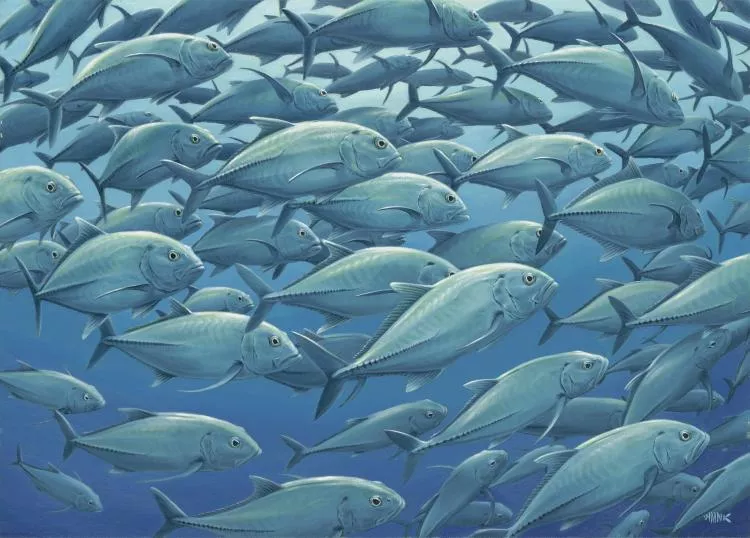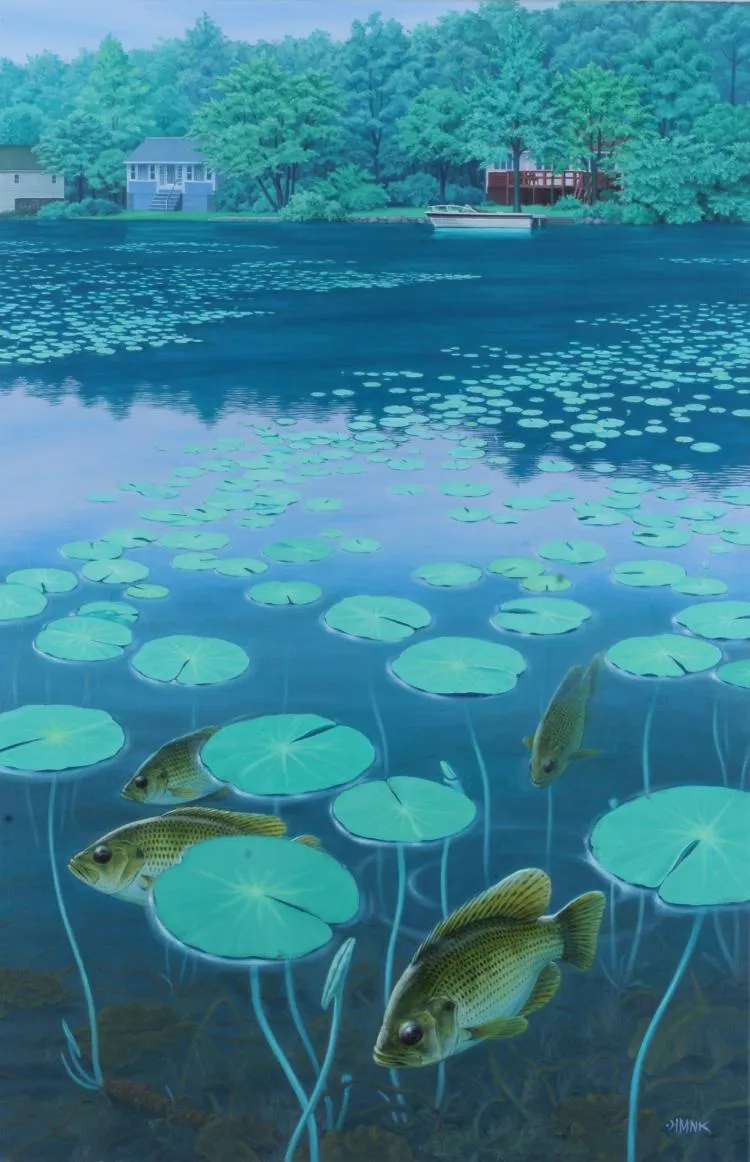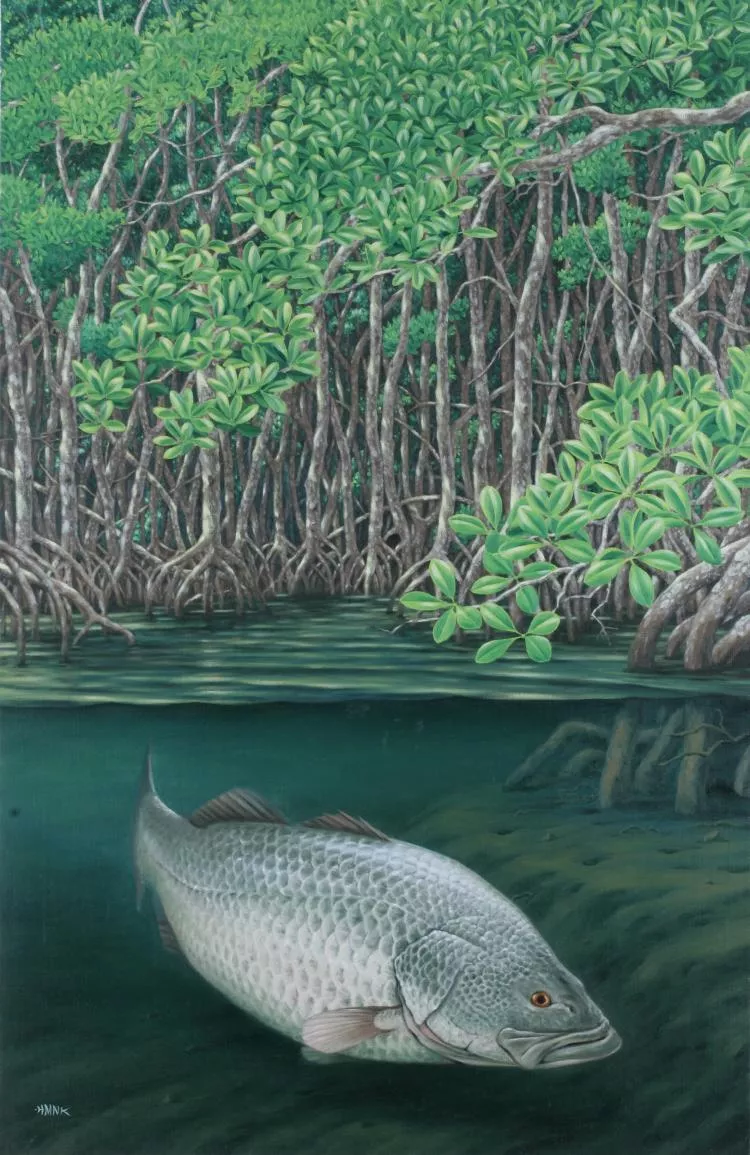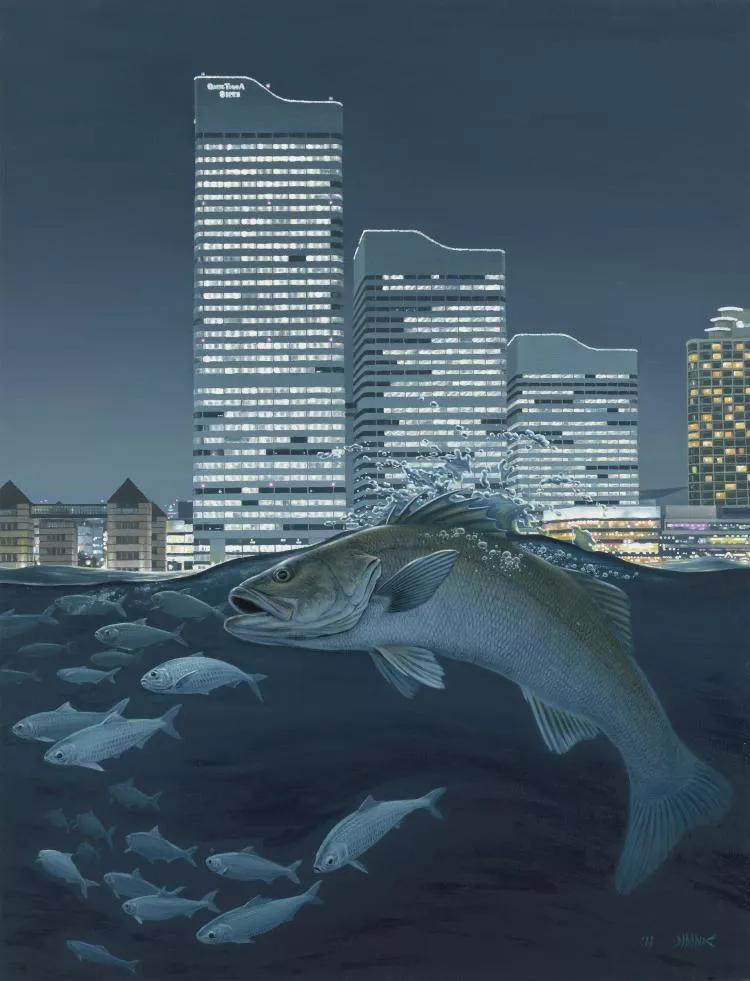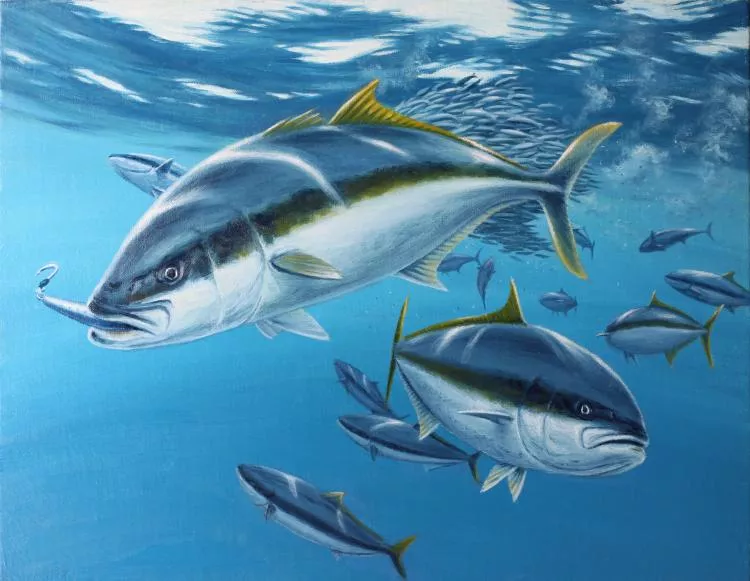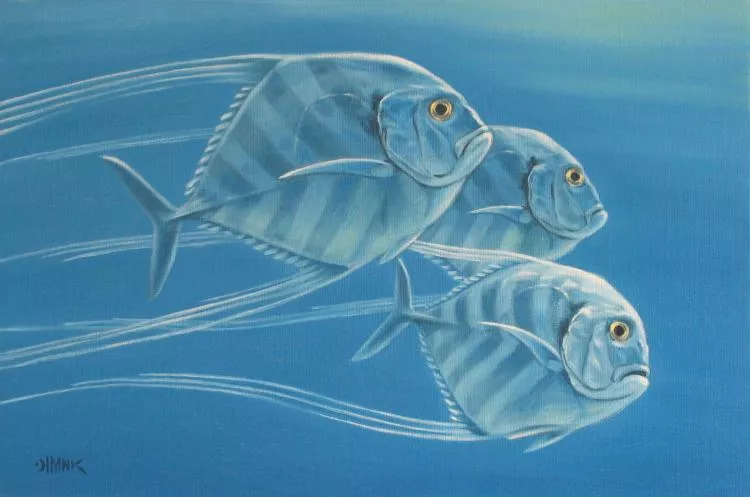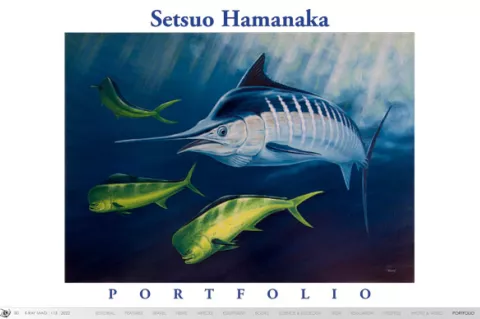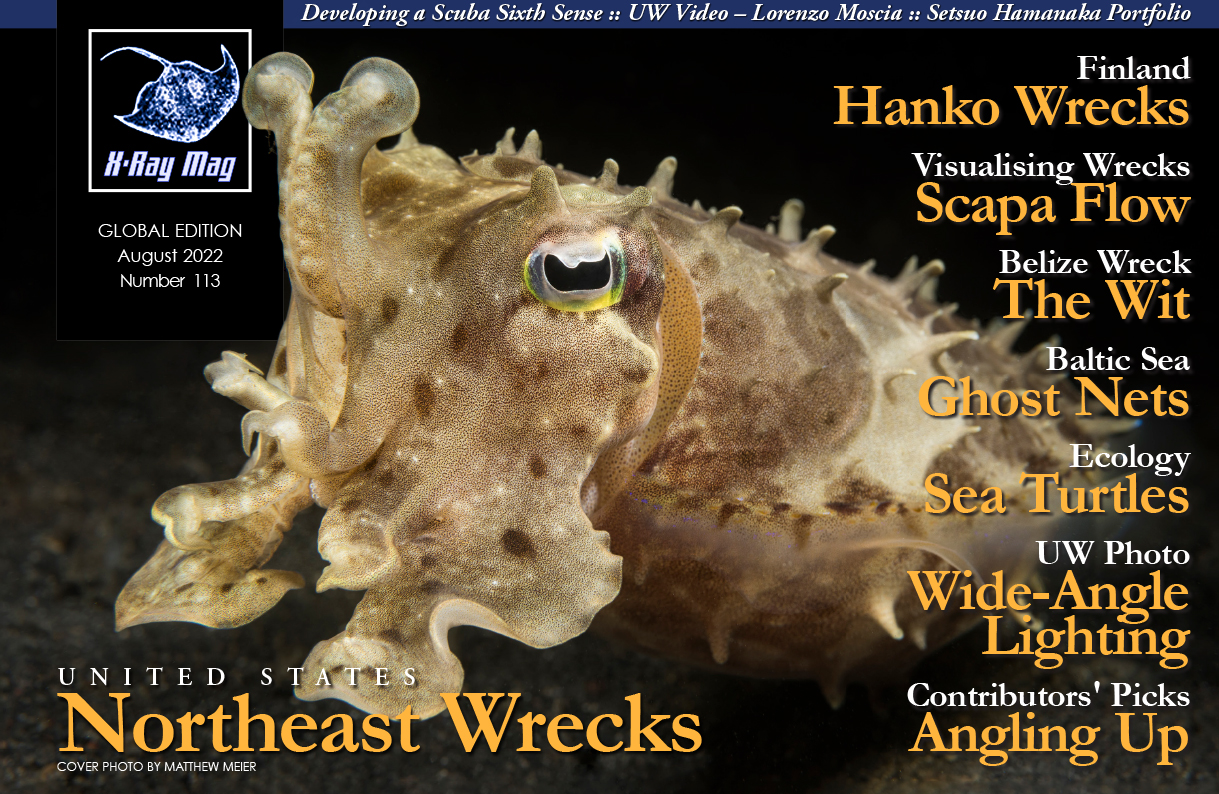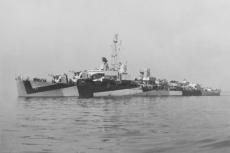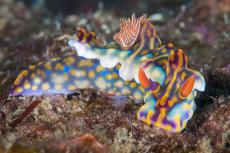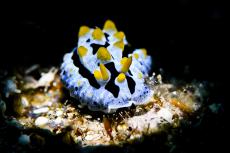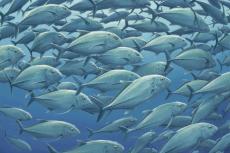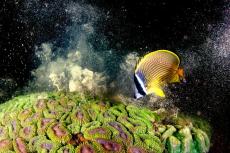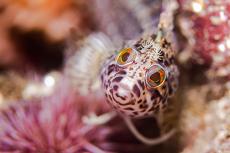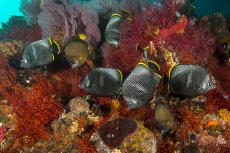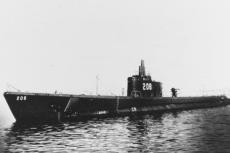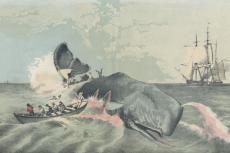Self-taught Japanese artist Setsuo Hamanaka creates beautiful, detailed and dynamic paintings of aquatic life in a variety of settings from the open ocean and mangroves to freshwater ponds and cityscapes. X-Ray Mag interviewed the artist to learn more about his creative process and what inspires him about the underwater realm.
Contributed by
Born in Yokohama in the ‘50s, Setsuo Hamanaka started out as a news photographer for the local daily newspaper. When he eventually became a freelance photojournalist, he began drawing illustrations for publications and soon created illustrations on commission for books and magazines. He then gravitated toward drawing illustrations for nature books and some fishing magazines, where he worked as a journalist.
His interest in fish has been important in his career and as a hobby, taking him to many locations around Japan and the world, including Saipan, Australia, Indonesia, the Maldives, Italy, Spain and the US coasts. With his accumulated experiences, he started to create oil paintings of marine life, featuring both saltwater fish and freshwater species as well as their habitats and seascapes. In addition to his artwork, he has worked on conservation projects in the Galapagos Islands to reduce illegal fishing and overfishing and in Japan to revive eelgrass meadows in Tokyo Bay.
X-RAY MAG: Why marine life and underwater themes? How did you come to these themes and how did you develop your style of painting?
SH: I am a self-taught artist. I was interested in technical and science illustration when I was a student. My experience as a press photographer gave me a good foundation for this type of illustration and nature art.
There is a lot of good fieldwork involved in working for fishing magazines. So, I learned ichthyology and was fascinated by the sea, fishes and their environment.
X-RAY MAG: Who or what has inspired you and your artwork and why?
SH: I learned a lot from the artworks of European and North American nature artists. Stanley Meltzoff, Al Barnes and Don Ray gave me motivation to paint underwater images. I was fortunate to meet Don Ray at an IGFA [International Game Fish Association] art show in 2005 and saw some of his original paintings.
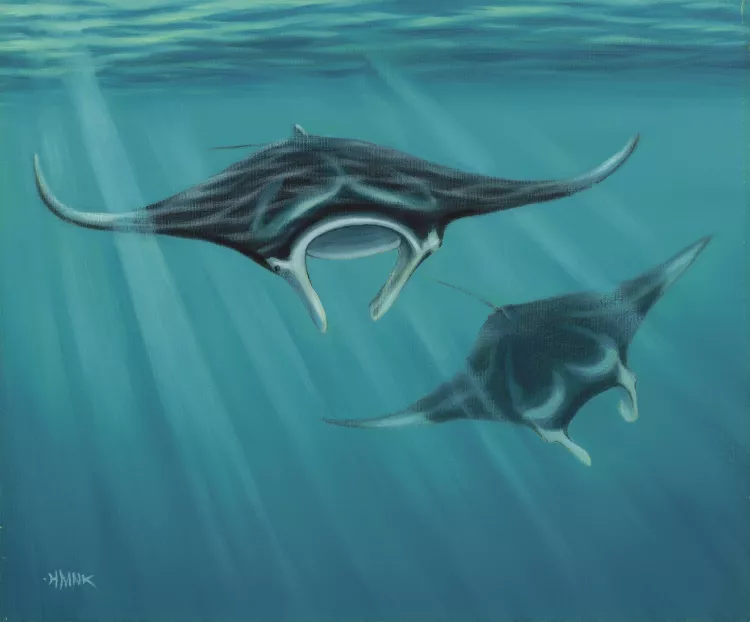
X-RAY MAG: What is your artistic method or creative process?
SH: My fieldwork involves fishing trips and conservation research. As I used to be a photographer, I take many pictures, not only for research reports but also for my own reference. Sometimes, I keep my catch to study the anatomy, and to eat.
My medium is oil on canvas. I approach the creative process in an orthodox manner. I create many rough drawings in charcoal for the composition, small oil paintings for the color study, and then move on to a big canvas.
X-RAY MAG: What is your relationship to the underwater world and coral reefs? How have your experiences underwater influenced your art? In your relationship with reefs and the sea, where have you had your favorite experiences?
SH: I am not a scuba diver. Unfortunately, I have had a problem with my nose since childhood and cannot relieve ear pressure. Nonetheless, I visit many tropical seas and clear waters, not only to fish but also as a fishing trip coordinator for television programs and as an ODA [official development assistance] expert.
I have seen and fished many species in their natural habitats, and met with local fishers. I have learned about the ecology of fish and their environment, and use this to inform my imagination and visualization of underwater images. You can watch footage from many underwater action cams these days. Still, an artist’s imagination can create much better dramatic stories and circumstances. I also love shallow waters and wetlands as I do not need to use scuba equipment there.
X-RAY MAG: What are your thoughts on ocean conservation and coral reef management and how does your artwork relate to these issues?
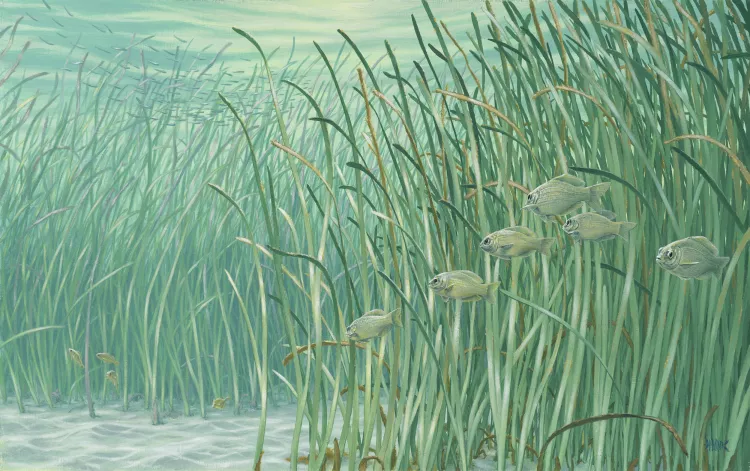
SH: I was born in Yokohama and now live in Yokosuka. Both are port towns on Tokyo Bay. I saw extensive water pollution in the bay as a child and now am seeing its recovery. There were many amamo (eelgrass) meadows on the coast of Tokyo Bay before I was born. Eelgrass fields hold a rich marine environment. Many juvenile fishes, squid, clams and other small creatures depend on the eelgrass meadow as a cradle or nursery, shelter or habitat for life. But now, only a few small patches are left in the bay because of industrialization in the Tokyo area.
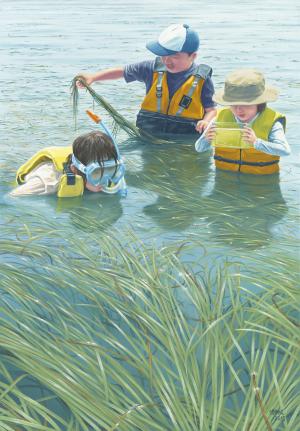
Water pollution has been reduced by sewer improvements. People now understand that we need healthy ecology in the bay. However, there are still many problems like hypoxic water masses (dead zones), extinction of species and poor catch yields in commercial fishing, etc.
At first, I was interested in painting tropical fishes and coral reefs; now I observe my own local waters. I joined a local nonprofit organization—“Amamo Revival Collaboration in Kanazawa-Hakkei, Tokyo Bay Area”—to study Tokyo Bay and help promote environmental education.
X-RAY MAG: What is the message or experience you want viewers of your artwork to have or understand?
SH: From a small stream on a mountain to a big blue ocean, we are connected by water, my friends.
X-RAY MAG: What are the challenges or benefits of being an artist in the world today? Any thoughts or advice for aspiring artists in ocean arts?
SH: There are many ways to showcase your artwork these days. Besides exhibitions, you can also have your own website, blog or social media pages. But the most important thing for a nature artist is fieldwork. Whether it is scuba diving, fishing or conservation, get outside and feel the water to gain inspiration.
X-RAY MAG: How do people—adults and children—respond to your works?
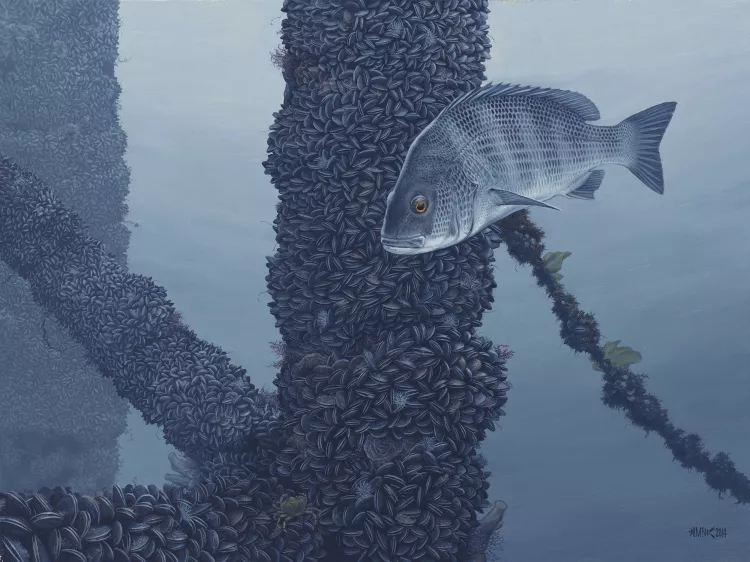
SH: I had an exhibition at Tokyo Bay Festival, which was organized by the Ministry of Land, Infrastructure, Transport and Tourism some years ago. A father and a boy—maybe ten years old or so—stopped in front of my artwork Native and Aliens. It was a painting of a native porgy in Tokyo Bay. The father began using hand gestures to teach his son how to fish a porgy. The boy was listening to his father with great interest and respect. It was a very lovely scene.
X-RAY MAG: What are your upcoming projects, art courses or events?
SH: Unfortunately, my art workshop had to be canceled because of Covid-19. So, no events are planned right now. In the meantime, I am focusing on local subjects. I moved to Yokosuka six years ago. Yokosuka is located on the Miura Peninsula, with Tokyo Bay to the east and Sagami Bay to the west. There are many fishing villages on the peninsula and many people here work in inshore fishing and seaweed farming. I started to study them. Some have hard days because of poor catch yields and global warming. But there are many interesting stories about the ecology, environment and traditional life here.
For more information or to purchase original artwork and limited edition prints, please visit the artist’s website at: s-ham.com/index.html or artistsforconservation.org/artists/1356.

